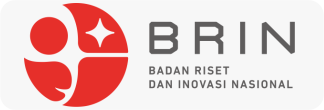Peluang Pemanfaatan Kulit Kombucha Berbasis Kulit Kopi dalam Perancangan Produk Home Décor
DOI:
https://doi.org/10.37802/candrarupa.v4i1.924Keywords:
Kombucha Cascara, Ornamental, Multifunction, Home DécorAbstract
The abundance of coffee production in Indonesia will also lead to an accumulation of waste from this industry. Approximately 35% of coffee skin waste, also known as cascara, is only used for animal feed and is rarely used for making products. This research aims to find the strongest characteristics of the kombucha skin material made from cascara and make it an innovative and sustainable product. The cascara kombucha skins used in the research have been processed and become ready-to-use skin sheets. These leather sheets are tested for their characteristics using material studies and observations compared to other products to find out what potential developments can be developed. The results show that when illuminated by light, this material has a texture and color that is quite unique and shows potential towards lighting-based products, then by combining multifunctional and ornamental aspects in the product it can add value to the product so that it can compete and have its own appeal compared to other products. other. Apart from being exposed to light, the material also shows potential in laser cutting and interlocking techniques because it can create a pattern from both techniques. With its characteristics, the opportunity for this material is more towards home décor products because its potential is based on lighting, so it can lead to lighting products that add value with multifunctional and ornamental aspects.
References
A. I. Putra, Y. Budisusanto, and U. W. Deviantari, “METODE SPASIAL TEMPORAL (STUDI KASUS: SELURUH INDONESIA),” 2022.
. S. and M. Syabriana, “Produksi Bioetanol Dari Limbah Kulit Kopi Menggunakan Enzim Zymomonas Mobilis Dan Saccharomyces Cereviseae,” Jurnal Serambi Engineering, vol. 3, Jan. 2018, doi: 10.32672/jse.v3i1.356.
Y. G. Lee, E. J. Cho, S. Maskey, D. T. Nguyen, and H. J. Bae, “Value-Added Products from Coffee Waste: A Review,” Apr. 2023, MDPI. doi: 10.3390/molecules28083562.
F. Khaleyla, N. Kuswanti, N. Qomariyah, and E. R. Purnama, “Pelatihan Pengolahan Limbah Kulit Kopi untuk Pakan Ternak Ruminansia di Desa Ngembat, Gondang, Mojokerto,” Mitra Mahajana: Jurnal Pengabdian Masyarakat, vol. 4, pp. 179–185, Nov. 2023, doi: 10.37478/mahajana.v4i3.3135.
S. A. Bekalo and H. W. Reinhardt, “Fibers of coffee husk and hulls for the production of particleboard,” Materials and Structures/Materiaux et Constructions, vol. 43, pp. 1049–1060, Oct. 2010, doi: 10.1617/s11527-009-9565-0.
L. Yan, “Optimization of the Culture Conditions of Kombucha Cellulose by Response Surface Methodology,” Science Discovery, vol. 5, p. 307, 2017, doi: 10.11648/j.sd.20170505.11.
T. P. Van, Q. K. Phan, G. B. Pham, and A. D. Do, “Repurposing Coffee Husk By-Products (Cascara) for the Production of Kombucha Beverage,” Jun. 2023. doi: 10.21203/rs.3.rs-3041292/v1.
D. Gumulya, “Pembelajaran dari Pengajaran Sustainable Product Design pada beberapa Universitas di United Kingdom, Australia, Denmark, the Netherlands, and the United States,” Jurnal Desain Indonesia, pp. 1–17, Sep. 2023, doi: 10.52265/jdi.v5i2.234.
Y. A. Lee, “Clothing made from tea byproduct could improve health of fashion industry,” https://www.news.iastate.edu/news/clothing-made-tea-byproduct-could-improve-health-fashion-industry.
D. Concord, “Kombucha Leather - The Biomaterial-Based Vegan Leather,” https://www.libertyleathergoods.com/kombucha-leather/.
A. Cole, “Kombucha Leather Material,” https://wiki.greenlab.org/2019/05/09/kombucha-leather-material/.
J. Wood, J. Verran, and J. Redfern, “Bacterial cellulose grown from kombucha: Assessment of textile performance properties using fashion apparel tests,” Textile Research Journal, vol. 93, pp. 3094–3108, Jul. 2023, doi: 10.1177/00405175231152668.
B. Mario, “Kajian Estetika pada Ornamen Jendela Kaca Patri di Gereja Katolik Kelahiran Santa Perawan Maria Surabaya,” CandraRupa : Journal of Art, Design, and Media, vol. 3, pp. 113–122, Oct. 2024, doi: 10.37802/candrarupa.v3i2.830.
G. Sujatmiko, W. Herdiana, P. Studi, D. Produk, and I. Kreatif, “EKSPERIMEN PENGOLAHAN LUMPUR LAPINDO MENJADI SEBUAH PRODUK DENGAN CARA DIREBUS UNTUK MENDAPATKAN HASIL PRODUK YANG TIDAK MUDAH RETAK.”
W. Hidayat, “KLASIFIKASI DAN SIFAT MATERIAL TEKNIK SERTA PENGUJIAN MATERIAL,” Apr. 2019. doi: 10.31227/osf.io/6bmfu.
Downloads
Issue
Section
License
Copyright (c) 2025 CandraRupa : Journal of Art, Design, and Media

This work is licensed under a Creative Commons Attribution-ShareAlike 4.0 International License.

















